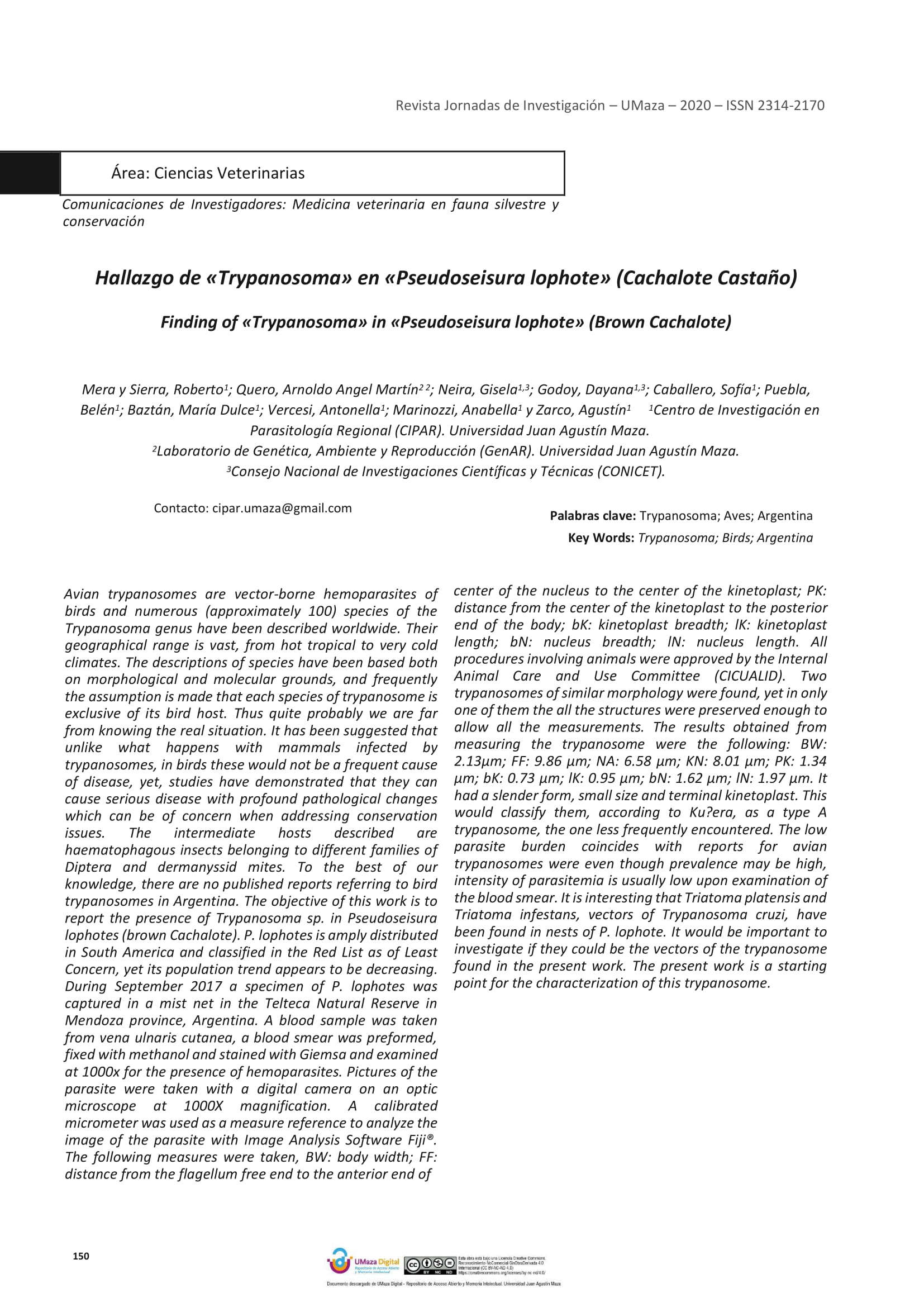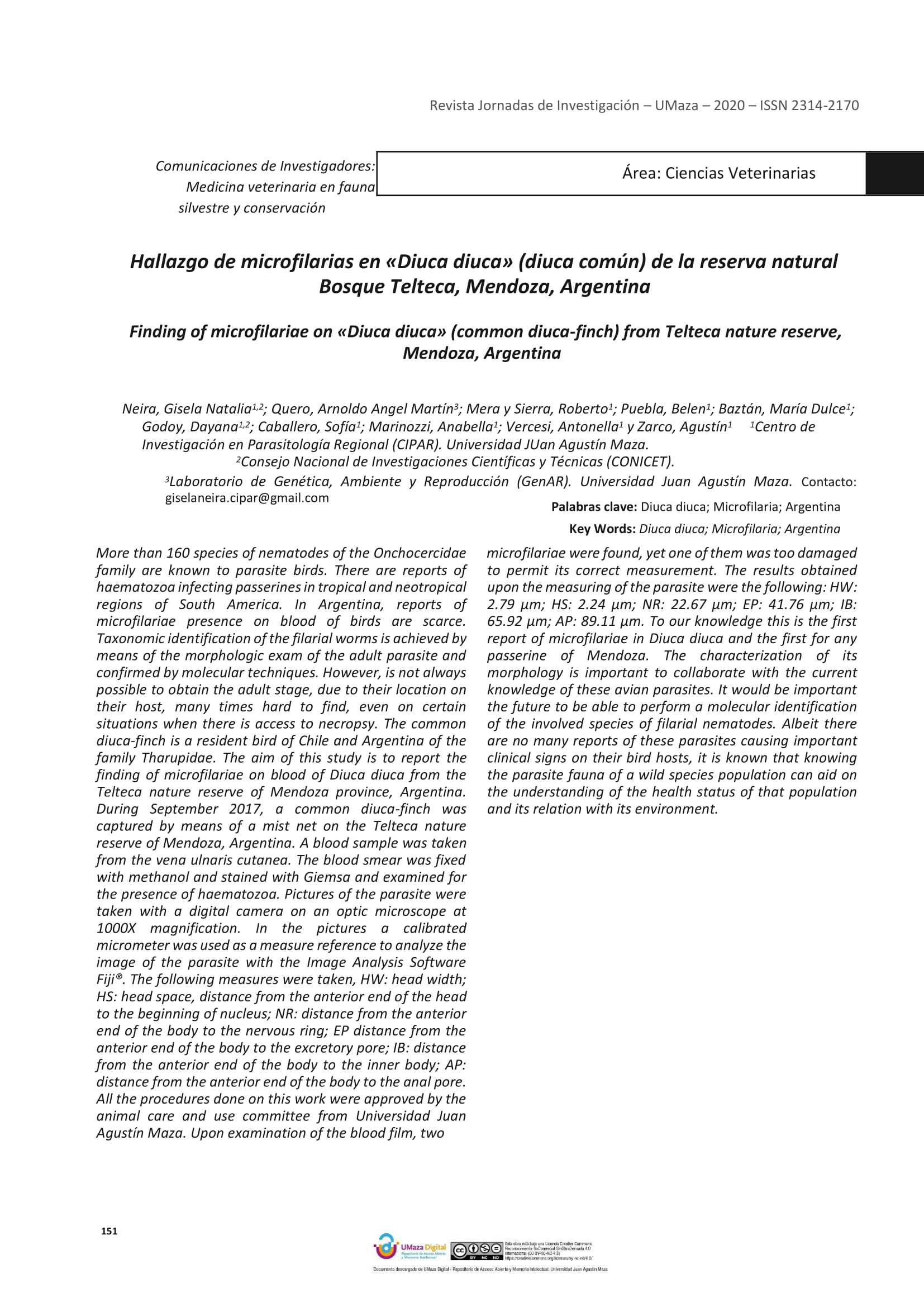Browsing Revista Jornadas de investigación 2020 by Author "Baztán, María Dulce"
Now showing items 1-3 of 3
-
Hallazgo de "Trypanosoma" en "Pseudoseisura lophote" (Cachalote Castaño)
Mera y Sierra, Roberto; Quero, Arnoldo Ángel Martín; Neira, Gisela; Godoy, Dayana; Caballero, Sofía; Puebla, Belén; Baztán, María Dulce; Vercesi, Antonella; Marinozzi, Anabella; Zarco, Agustín (Editorial UMaza, 2020-10)Avian trypanosomes are vector-borne hemoparasites of birds and numerous (approximately 100) species of the Trypanosoma genus have been described worldwide. Their geographical range is vast, from hot tropical to very cold climates. The descriptions of species have been based both on morphological and molecular grounds, and frequently the assumption is made that each species of trypanosome is exclusive of its bird host. Thus quite probably we are far from knowing the real situation. It has been suggested that unlike what happens with mammals infected by trypanosomes, in birds these would not ... -
Hallazgo de microfilarias en "Diuca diuca" (diuca común) de la reserva natural Bosque Telteca, Mendoza, Argentina
Neira, Gisela Natalia; Quero, Arnoldo Ángel Martín; Mera y Sierra, Roberto; Puebla, Belén; Baztán, María Dulce; Godoy, Dayana; Caballero, Sofía; Marinozzi, Anabella; Vercesi, Antonella; Zarco, Agustín (Editorial UMaza, 2020-10)More than 160 species of nematodes of the Onchocercidae family are known to parasite birds. There are reports of haematozoa infecting passerines in tropical and neotropical regions of South America. In Argentina, reports of microfilariae presence on blood of birds are scarce. Taxonomic identification of the filarial worms is achieved by means of themorphologic exam of the adult parasite and confirmed by molecular techniques. However, is not always possible to obtain the adult stage, due to their location on their host, many times hard to find, even on certain situations when there is access to ... -
¿Hay relación entre las tasas de parasitismo por Haemoproteus y los componentes celulares hematológicos del Chingolo Zonotrichia capensis en bosques desérticos de Mendoza, Argentina?
Quero, Arnoldo Ángel Martín; Caballero, Sofía; Vercesi, Antonella; Baztán, María Dulce; Godoy, Dayana; Marinozzi, Anabella; Mera y Sierra, Roberto; Neira, Gisela; Puebla, Belén; Zarco, Agustín (Editorial UMaza, 2020-10)Haemoproteus representa a un género de parásitos intraeritrocíticos aviares transmitidos por vectores, siendo algunos de los parásitos sanguíneos más comunes y extendidos de las aves silvestres y domésticas. La ocurrencia de estos hemoparásitos puede afectar significativamente la condición del hospedador, reduciendo su fitness y aumentado su estrés, aunque los mecanismos por lo cual lo afecta parecen ser especie-específicos. Entre los efectos a nivel hematológico, las infecciones por hematozoos pueden, según el caso, reducir el hematocrito o estimular el aumento de la producción eritrocitaria. ...












